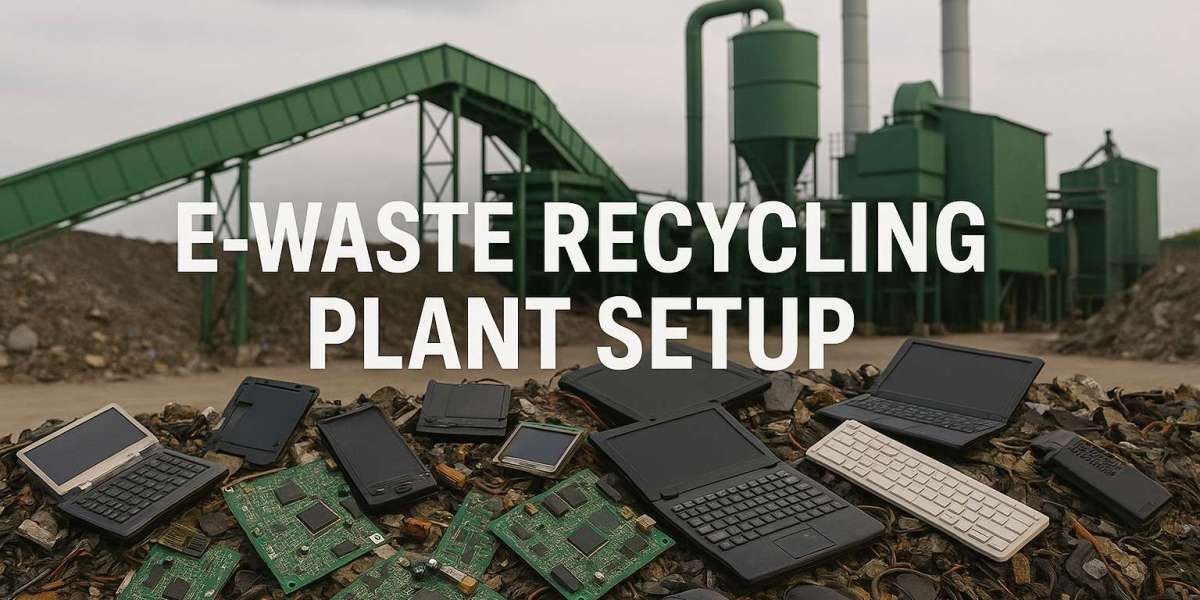India’s rapidly growing electronics industry has led to a surge in electronic waste—also known as e-waste. With millions of devices becoming obsolete every year, the country faces a critical challenge in managing the hazardous and non-biodegradable waste they generate. Improper disposal of e-waste can release toxic substances into the environment, affecting human health and ecosystems. However, this rising issue presents a significant business opportunity through the e-waste recycling plant setup a venture that transforms environmental risk into sustainable growth.
Establishing an e-waste recycling plant setup is more than just a business initiative; it’s a step toward building a circular economy. These plants recover valuable materials such as copper, aluminum, gold, and rare earth metals from discarded electronics. Instead of extracting new raw materials, recycling allows industries to reuse existing resources, thereby conserving energy and reducing pollution. With increasing demand for raw materials in the electronics sector, recycled components offer both economic and ecological advantages.
Setting up an e-waste recycling plant involves several key steps, beginning with a comprehensive feasibility analysis. This includes studying local waste generation trends, evaluating the availability of recyclable materials, and assessing market demand for recovered metals and components. A well-thought-out plan also factors in logistics, such as collection channels and proximity to urban waste sources.
Next comes the legal and regulatory framework. Businesses must obtain authorization from the Central Pollution Control Board (CPCB) and comply with E-Waste Management Rules. Environmental clearances, consent to operate, and registration under Extended Producer Responsibility (EPR) norms are essential. Failure to comply can result in penalties and shutdowns, so regulatory due diligence is critical during the initial stages of plant planning.
Investment in technology plays a central role in the success of an e-waste recycling venture. Advanced machinery ensures efficient dismantling, segregation, and extraction of valuable materials while minimizing waste. Automation and digital monitoring can further enhance operational safety and output quality. Depending on the scale, the plant may also require air and water pollution control systems, storage facilities for hazardous components, and secure zones for high-value material recovery.
The Indian government supports e-waste management through policy reforms, financial incentives, and public awareness campaigns. Initiatives under Swachh Bharat and Make in India have placed greater focus on waste-to-resource projects. Entrepreneurs can leverage government schemes, green financing, and CSR partnerships to fund their e-waste recycling plant setup and scale operations sustainably.
Beyond regulatory and financial incentives, an e-waste recycling plant brings long-term benefits to society and the environment. It reduces the burden on landfills, minimizes pollution, and ensures responsible disposal of hazardous components like lead, cadmium, and brominated flame retardants. Furthermore, the sector creates skilled and semi-skilled jobs in waste collection, processing, logistics, and plant operations contributing to local economies.
As digital adoption accelerates and more devices enter the waste stream, the need for structured and professional e-waste recycling plant setups will only grow. Forward-thinking businesses have a unique opportunity to lead this transformation reaping economic rewards while making a measurable impact on sustainability. Now is the time to turn yesterday’s gadgets into tomorrow’s resources and drive India toward a greener, cleaner future.



